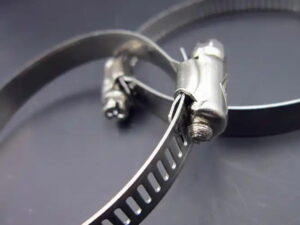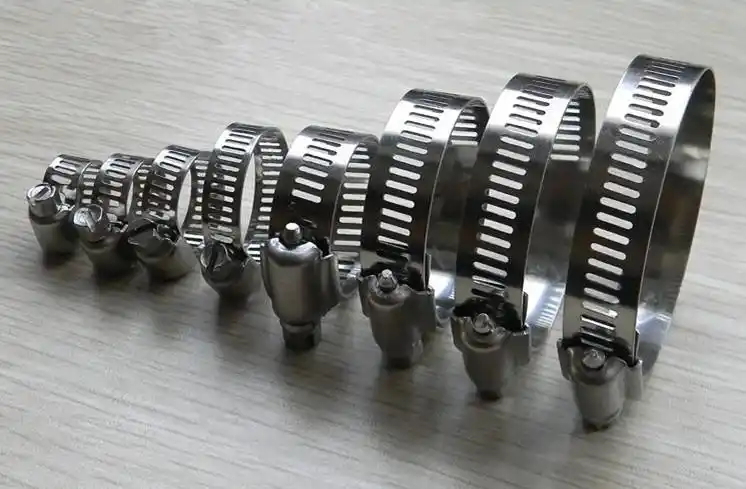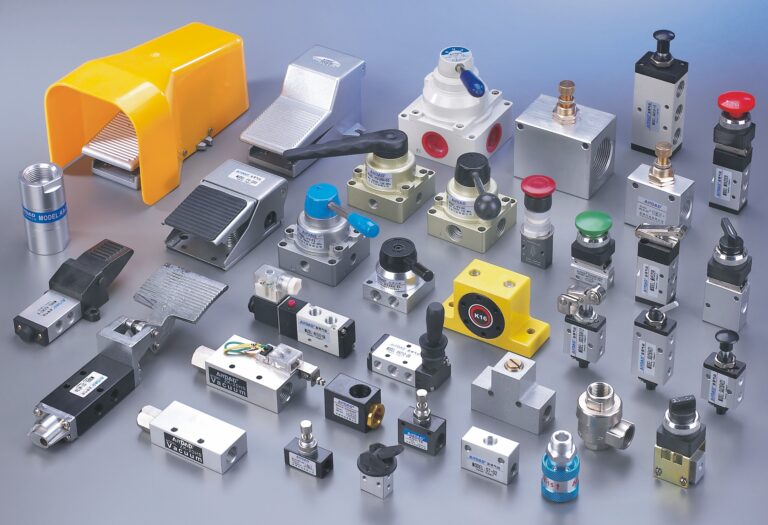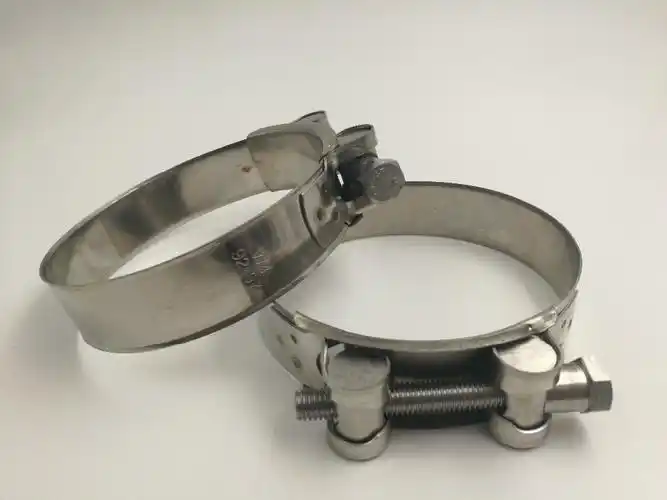Which is a common use for a hose clamp
Hose clamps, also known as hose clips or worm drive clamps, are essential components in various industries due to their…
Hose clamps, also known as hose clips or worm drive clamps, are essential components in various industries due to their ability to securely fasten hoses and tubing. These clamps are designed to create a tight seal, preventing leaks and ensuring the efficient transfer of fluids or gases. In this article, we will explore the common uses of hose clamps, their importance in different applications, and the factors that contribute to their widespread adoption.

Common Uses of Hose Clamps
1.Automotive Industry
One of the most common uses for hose clamps is in the automotive industry. They are used to secure hoses that carry fluids such as coolant, fuel, and oil. Hose clamps ensure that these fluids are transferred efficiently without any leakage, which is crucial for the performance and longevity of a vehicle’s engine.
2.Plumbing and HVAC Systems
In plumbing, hose clamps are used to secure water supply lines, drain pipes, and irrigation systems. They are also essential in heating, ventilation, and air conditioning (HVAC) systems where they are used to connect ductwork and secure refrigerant lines. The clamps help maintain airtight seals, which is vital for the efficiency of these systems.
3.Industrial Applications
Hose clamps are widely used in industrial settings for a variety of purposes. They can be found securing hydraulic hoses in machinery, securing air lines in pneumatic systems, and connecting various types of tubing in chemical processing plants. The robustness and reliability of hose clamps make them a preferred choice in these high-stress environments.
4.Marine and Boating
In the marine industry, hose clamps are used to secure fuel lines, water intakes, and waste discharge hoses. They are also used in the securing of hoses for bilge pumps and other essential systems on boats and ships. The ability of hose clamps to withstand harsh marine conditions makes them ideal for these applications.
5.Agricultural Equipment
Hose clamps are also commonly used in agricultural equipment to secure hoses that carry water, chemicals, and fuels. They are essential for maintaining the efficiency of irrigation systems, crop sprayers, and other machinery that relies on fluid transfer.
6.Home and Garden Use
Even in residential settings, hose clamps have their place. They can be used to secure garden hoses, connect water features, or even to repair leaks in household plumbing temporarily. Their ease of use and effectiveness make them a handy tool for homeowners.

Importance of Hose Clamps
The importance of hose clamps cannot be overstated. They are critical in ensuring that fluid transfer systems operate efficiently and safely. Here are some of the key reasons why hose clamps are so important:
1.Leak Prevention
Hose clamps prevent leaks by creating a tight seal around the hose or tubing. This is crucial in applications where even a small leak can lead to significant problems, such as in automotive fuel systems or industrial chemical processing.
2.Durability and Strength
Hose clamps are designed to be durable and strong, capable of withstanding high pressures and harsh environments. This durability ensures that they can maintain their integrity over time, providing a reliable seal.
3.Ease of Installation and Adjustment
One of the advantages of hose clamps is their ease of installation and adjustment. They can be quickly tightened or loosened as needed, making them ideal for situations where hoses may need to be frequently removed or adjusted.
4.Versatility
Hose clamps come in a variety of sizes and materials, making them suitable for a wide range of applications. This versatility allows them to be used in everything from small household repairs to large industrial systems.
Hose clamps are an indispensable tool in many industries and applications. Their ability to create a secure seal, prevent leaks, and withstand harsh conditions makes them a popular choice for fluid transfer systems. Whether in the automotive industry, plumbing, HVAC systems, or even in home and garden use, hose clamps play a vital role in ensuring the efficient and safe operation of these systems. As technology advances and new applications for hose clamps are discovered, their importance and versatility will only continue to grow.

Problems encountered and solutions
1. Connecting the radiator hose in the car cooling system
Problem: Coolant leaks may be caused by the hose clamp not being tightened, resulting in a loose seal at the connection.
Solution: First turn off the engine, wait for the cooling system to cool down, and then use a suitable tool (such as a screwdriver or wrench, depending on the type of hose clamp) to further tighten the hose clamp. But be careful not to over-tighten to avoid damaging the hose. If the hose is already worn or cracked, replace it with a new one, and make sure the hose clamp is in the correct position and tightened with moderate force during installation.
2. Connecting water pipes in home garden watering systems
Problem: Water leaks at the connection. The reason may be that the hose clamp has rusted due to long-term exposure to outdoor environment and lost its tightening ability.
Solution: First turn off the water source and remove the rusty hose clamp. If the rust is light, you can use sandpaper to remove the rust layer, then apply a layer of anti-rust oil, reinstall and tighten it. If the rust is serious, you should replace the hose clamp with a new stainless steel hose clamp, which is more corrosion-resistant and can extend its service life. At the same time, before installing the new hose clamp, check whether the water pipe connection part is flat. If there are foreign objects or protrusions, they should be cleaned to ensure a good seal.

3. Connecting the filter hose in the aquarium
Problem: The water flow has decreased. This may be because the hose clamp is loose, causing air to enter the hose and affect the water flow.
Solution: Carefully tighten the hose clamp, but avoid excessive force to damage other equipment or hoses in the aquarium. After tightening, observe whether the water flow returns to normal. If the problem persists, check whether there is any blockage inside the hose. If so, remove the hose for cleaning, remove the blockage, reconnect and secure with the hose clamp.







